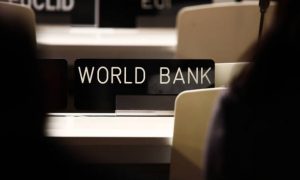Back in 1987, the member countries of the United Nations on September 16 signed the Montreal Protocol under the Vienna Convention to protect the atmospheric ozone layer by limiting and ultimately phasing out the production and consumption of ozone-depleting substances. Little would they have thought that their collective decision and subsequent actions would begin to heal the earth’s protective shield of gas in three decades. World Ozone Day, observed on September 16 every year, commemorates the Montreal Protocol as it was adopted on this date and also celebrates its achievements.
Implementation of Montreal Protocol
Scientists, in the 1970s, found that man-made chemicals like hydrochlorofluorocarbons, which were then widely used in refrigerators, air conditioners, and aerosol cans, were thinning the ozone layer which protects the earth from harmful ultraviolet solar radiation. This prompted the world’s governments to adopt the Vienna Convention for the protection of the ozone layer in 1985 and then the Montreal Protocol under the convention in 1987.
The Montreal Protocol sets a timetable to cut production and consumption of ODSs. According to the UN, most developed and developing nations adhered to the timetable and some even achieved the targets ahead of the phase-out schedules.
Universal ratification
The Montreal Protocol and the Vienna Convention, on September 16, 2009, became the first treaties in the UN’s history to achieve universal ratification, with all member states collectively making efforts to protect the ozone layer.
Success
The UN says the Montreal Protocol has led to the phase-out of 99 per cent of ODSs worldwide. And, since 2000, the layer has healed at a rate of 1-3 per cent every ten years; therefore, the UN Environment Programme believes northern hemisphere ozone would completely repair by the 2030s and the southern hemisphere ozone would be healed by the 2050s.
Scientific evidence suggests that besides helping the regeneration of ozone, the Montreal Protocol has also considerably reduced global warming because many ozone-depleting substances are also potent greenhouse gases that cause climate forcing on getting accumulated in the atmosphere.
A world sans Montreal Protocol
Human health: Ozone depletion allows ultraviolet radiation (UV) from the sun to reach earth. Overexposure to UV radiation increases the risk of diseases such as skin cancer and cataracts in human beings.
Food security: Crops require sunlight for carrying out photosynthesis; therefore, exposure to UV radiation cannot be avoided. Increased exposure to UV radiation from the sun can damage their systems as they did not develop mechanisms to deal with such variations during the course of evolution.
Ecosystems: Uncontrolled depletion of ozone threatens both terrestrial and aquatic ecosystems. Just as it harms human health and crops, it also harms other forms of life. Higher UV levels disrupt various ecological processes such as carbon dioxide exchanges between biosphere and atmosphere, nitrogen cycle etc.
Moreover, the breakdown of organic matter also gets stimulated by the sun’s radiation. Therefore, the combined effects of ozone thinning can worsen the accumulation of carbon dioxide in the atmosphere and cause pollution and climate change.
Lesson
Results of the efforts made under the Montreal Protocol show that people can come out of any global crisis if they work together.






















 WhatsApp us
WhatsApp us
Pingback: berry pie strain review
Pingback: บับเบิ้ล